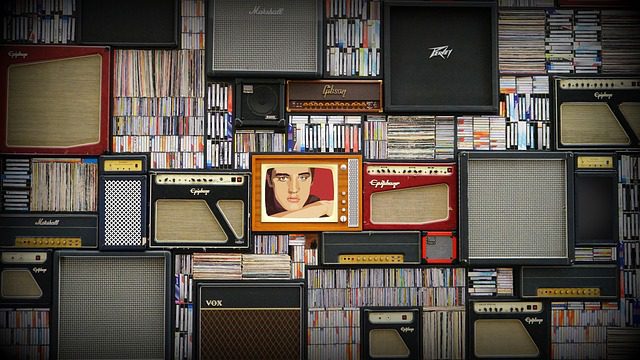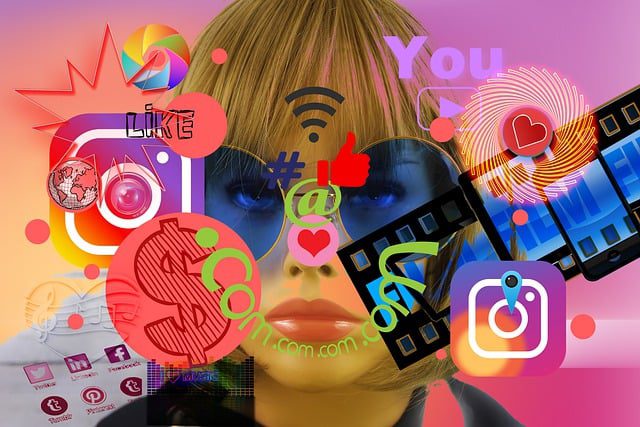Social media has become an important tool for artists of all levels, offering a platform to showcase their work, build an audience, and connect with other creatives.
Using social media effectively, artists can promote their art, generate sales, and establish themselves as professional artists. Implementing social media tips for artists can further enhance their online presence and visibility.
How can I be a good social media artist?
Social Media Tips for Artists

There are many benefits to using social media for artists, including:
1. Increased visibility and reach
Social media platforms allow artists to reach a global audience with their work. Artists can connect with potential collectors, buyers, and collaborators worldwide by sharing their art online.
2. Enhanced brand recognition
Social media can be used to build a strong personal brand for artists. Artists can connect with followers and build a loyal fan base by sharing their unique voices and perspectives.
3. Opportunities for cooperation
Social media makes it easy for artists to connect with other creatives and collaborate on projects. By partnering with other artists, artists can expand their reach and audience and create new and innovative work.
4. Market research insights
Social media analytics can provide artists with valuable insights into their audience demographics, preferences, and interests.
This information can be used to create more targeted and effective marketing campaigns.
5. Understanding Your Audience
The first step to using social media effectively is understanding your target audience. Consider the following factors when identifying your target audience:
- Demographics: Age, gender, location, occupation, income, etc.
- Interests: What are their hobbies and passions? What other types of art do they enjoy?
- Pain points: What challenges do they face? What are their needs and wants?
Once you understand your target audience well, you can tailor your content and engagement strategies to appeal to them.
6. Platform Selection
There are a variety of social media platforms available, each with its unique features and benefits. When choosing platforms for your art, consider the following factors:
7. Audience demographics
Where is your target audience most active online?
8. Art style
Some platforms are better suited for certain types of art than others. For example, Instagram is a good platform for sharing visual art, such as paintings, sculptures, and photography.
9. Platform features
Consider the important features to you, such as the ability to share videos, host live streams, or sell artwork directly through the platform.
Best Content Social Media Strategy for Artists
Your social media content should be engaging, informative, and visually appealing. Here are some tips for creating a successful content strategy:

1. Showcase your creative process
Give your followers a behind-the-scenes look at your creative process. Share photos and videos of yourself in the studio, and explain your inspiration and techniques.
2. Share behind-the-scenes glimpses
Share glimpses of your daily life as an artist. This could include photos of your workspace, materials, or sources of inspiration.
3. Highlight completed artwork
You should also share your finished artwork on social media. Take high-quality photos and videos of your work and write informative captions telling each piece’s story.
4. Promote art-related events and exhibitions
Use social media to promote upcoming art events and shows you participate in. This is a great way to reach a new audience and generate interest in your work.
5. Visual Branding
Your visual branding should be consistent across all of your social media platforms. This will help you to create a recognizable and professional image for your art. Here are some tips for establishing a strong visual brand:
6. Use a cohesive color palette and themes
Choose a color palette and theme that reflects your style and the type of art you create. Use this color palette and theme consistently in social media posts, websites, and other marketing materials.
7. Create a recognizable brand identity
Develop a recognizable brand identity for your art. This could include a logo, tagline, or signature font. Use your brand identity consistently in all of your marketing materials.
8. Engagement Techniques
Social media is all about engagement. Here are some tips for encouraging audience interaction on your social media posts:
9. Ask questions
Ask your followers open-ended questions to get them talking. For example, you could ask them about their favorite type of art, favorite artist, or thoughts on your latest work.
10. Run contests and giveaways
Contests and giveaways are a great way to generate excitement and engagement on social media. Offer prizes your target audience would be interested in, such as original artwork, art supplies, or gift certificates to art galleries.
11. Respond to comments and messages promptly
When your followers comment on your posts or send you messages, be sure to respond promptly. This shows that you value their feedback and are interested in building a relationship with them.
Social Media for Artists Hashtag Strategy
Hashtags are a great way to get your art seen by more people on social media. When you use relevant hashtags, your posts will show up in the search results for those hashtags. This is a great way to reach a new audience and generate interest in your work.

1. Research and use relevant art-related hashtags
There are a variety of art-related hashtags available, such as #art, #artist, #painting, #sculpture, and #photography. Choose hashtags relevant to your type of art and likely to be used by your target audience.
2. Create a personalized hashtag for your artwork
You can also create a personalized hashtag for your artwork. This is a great way to brand your work and make it easier for people to find it on social media.
3. Use a mix of popular and niche hashtags
Combining popular and niche hashtags is important. Popular hashtags will help you to reach a larger audience, but niche hashtags will help you to get a more targeted audience.
Collaboration Opportunities
Collaborating with other artists is a great way to expand your reach and audience and create new and innovative work. There are many ways to collaborate with other artists, such as:
1. Guest posting on each other’s blogs
Guest posting is a great way to share your work with a new audience and build relationships with other artists.
2. Co-hosting social media live streams
Social media live streams are a great way to connect with your audience in real time and collaborate with other artists.
3. Participating in art challenges and collaborations
Many art challenges and collaborations take place on social media. Participating in these challenges is a great way to get involved in the art community and collaborate with other artists.
Analytics and Evaluation
It’s important to track your social media analytics to see what’s working and what’s not. Most social media platforms offer built-in analytics tools that you can use to track your performance.
Here are some of the key metrics that you should track:
Reach: How many people are seeing your posts?
Engagement: How many people interact with your posts (likes, comments, shares, etc.)?
Website traffic: How much traffic is your social media driving to your website?
Sales: How many sales are you generating from social media?
Once you understand your social media analytics, you can start to evaluate your content and engagement strategies. Make adjustments as needed to improve your performance.
What Social Networking for Artists platforms use?
1. Instagram
Instagram is a highly visual platform, making it ideal for artists to share their work. It also has a large and active user base, including many art enthusiasts and collectors.
2. Behance
Behance is a social networking platform for creative professionals, including artists, designers, and photographers. It is a great place to showcase your portfolio and connect with other creatives.
3. DeviantArt
DeviantArt is another popular online community for artists. It is known for its diverse range of art styles and genres, making it a great place to discover new artists and get feedback on your work.
4. ArtStation
ArtStation is a social media platform specifically for game artists and concept artists. It is a great place to network with other artists in the gaming industry and find job opportunities.
5. YouTube
YouTube is a great platform for artists who want to share their creative process and tutorials with others. You can also use YouTube to promote your artwork and sell merchandise.
6. Twitch
Twitch is a live streaming platform that is popular among gamers, but artists are also using it to live stream their creative process and connect with their fans.
In addition to these dedicated art platforms, many artists also use more general social media platforms such as Facebook, Twitter, and TikTok. These platforms can be a great way to reach a wider audience and promote your work.
Conclusion
Social media is a powerful tool for artists. Using social media art effectively, artists can promote their work, generate sales, and establish themselves as professional artists.
I hope these social media tips for artists help to increase the targeted audience.
Understand your target audience and tailor your content and engagement strategies accordingly.
Choose the right social media platforms for your art and your audience.
Create engaging, informative, and visually appealing content.
Use a cohesive visual brand across all of your social media platforms.
Encourage audience interaction through comments, likes, questions, and contests.
Use relevant hashtags to get your art seen by more people.
Collaborate with other artists to expand your reach and audience.
Track your social media analytics and evaluate your content and engagement strategies accordingly.
